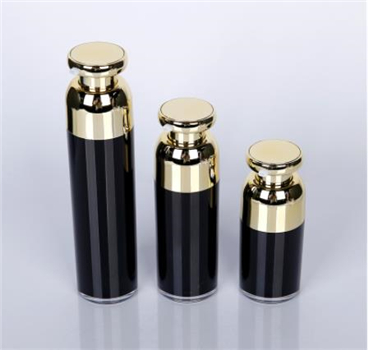Why do we use plastic
2022-02-11 11:08:47
About Acrylic Bottle:
Why do we use plastic ?
The replacement of plastics with other raw materials is often discussed. However, the fact is that replacing certain materials with plastic has many benefits.
Plastic reduces food waste
Plastic packaging makes food last longer and reduces food waste. Food production contributes to about 35% of the world’s greenhouse gases, whereas the production of all plastics accounts for 4%. The population on Earth is growing and the resources for producing food must be optimized. Properly designed packaging is crucial to minimize the amount of food thrown away on its way from the field to the table.
For example; a cucumber wrapped in 1,5 grams of plastic keeps it fresh for 14 days, which is 11 days longer than if it had not been wrapped. Minced meat in one of Scanfill’s packaging lasts five to six times longer than one that is packed in-store and wrapped with film. Scanfill’s packaging also uses only half the amount of plastic in the materials.
By changing and optimizing the packaging method in the grocery stores, they can save hundreds of tons of meat and other food. If the stores update the choice of material in their trays to an environmentally friendly and recyclable material, further environmental savings can be made. Both changes contribute to reduced food waste and reduced CO2 emissions.
Plastic reduces CO2 emissions
A glass bottle weighs about 327 grams, a plastic bottle containing as much liquid weighs 27 grams. Therefore, for the same transport weight, more liquid can be transported in plastic bottles compared to glass bottles. This reduces the number of transports which means the energy consumption, emissions of carbon dioxide and transport costs are reduced.
Plastic also makes our cars, aircrafts and boats lighter, which means that they do not consume as much fuel nor release as much carbon dioxide as if they had been heavier. Plastic reduces carbon dioxide emissions by 30 million tons per year compared to if we had used other materials when the cars were designed. This makes plastics considerably more resource-efficient when compared, for example, with using steel parts instead of plastic. This equals the amount of carbon dioxide, or CO2, emitted during 200 billion kilometers of driving – which in turn is the equivalent of a million cars driven five times around the world.

The plastic is often reinforced with minerals or similar in order to, for example, cope with the mechanical demands of the plastic car parts. Scanfill’s material is made of the same components as numerous car parts, which means that our packaging could, for example, be recycled into a plastic car part. The proportion of plastic in a modern car is between 12% and 15%. This means that in Europe we save 12 million tons of oil every year, which is about as much oil as the whole world consumes in one day.
Plastic take care of energy
Plastic also means that our houses are considerably more energy-efficient. It provides better insulation, which helps to keep the heat in the house during the cold season. Plastic insulation reduces energy consumption by 90%.
The plastic gives us renewable energy; for example in the wings of wind turbines, in solar panels as well as in the insulation of pipes and cables, which means that energy does not disappear into the ground but reaches where it’s needed.



















